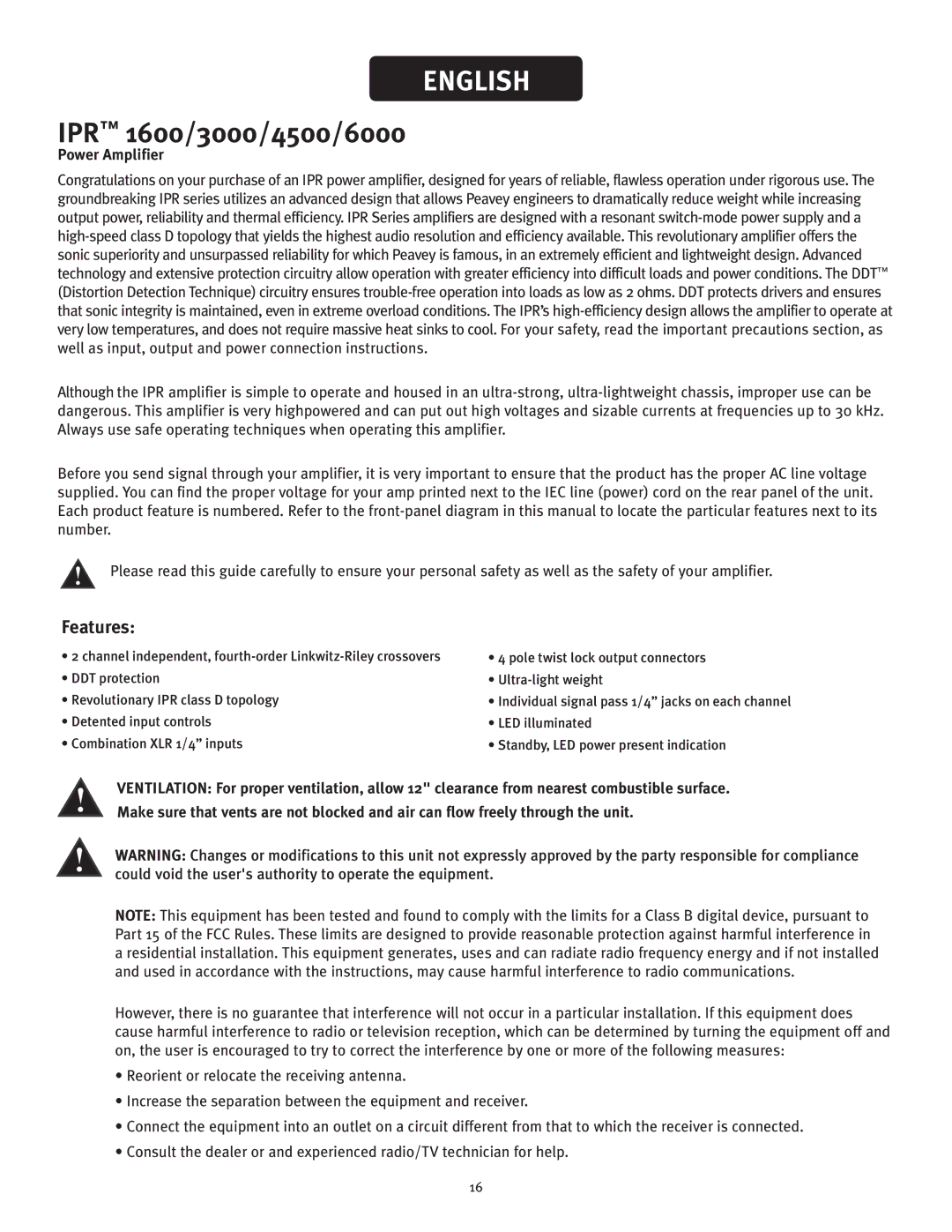
ENGLISH
IPR™ 1600/3000/4500/6000
Power Amplifier
Congratulations on your purchase of an IPR power amplifier, designed for years of reliable, flawless operation under rigorous use. The groundbreaking IPR series utilizes an advanced design that allows Peavey engineers to dramatically reduce weight while increasing output power, reliability and thermal efficiency. IPR Series amplifiers are designed with a resonant
Although the IPR amplifier is simple to operate and housed in an
Before you send signal through your amplifier, it is very important to ensure that the product has the proper AC line voltage supplied. You can find the proper voltage for your amp printed next to the IEC line (power) cord on the rear panel of the unit. Each product feature is numbered. Refer to the
Please read this guide carefully to ensure your personal safety as well as the safety of your amplifier.
Features:
• 2 channel independent, | • 4 pole twist lock output connectors |
• DDT protection | • |
• Revolutionary IPR class D topology | • Individual signal pass 1/4” jacks on each channel |
• Detented input controls | • LED illuminated |
• Combination XLR 1/4” inputs | • Standby, LED power present indication |
VENTILATION: For proper ventilation, allow 12" clearance from nearest combustible surface.
Make sure that vents are not blocked and air can flow freely through the unit.
WARNING: Changes or modifications to this unit not expressly approved by the party responsible for compliance could void the user's authority to operate the equipment.
NOTE: This equipment has been tested and found to comply with the limits for a Class B digital device, pursuant to Part 15 of the FCC Rules. These limits are designed to provide reasonable protection against harmful interference in a residential installation. This equipment generates, uses and can radiate radio frequency energy and if not installed and used in accordance with the instructions, may cause harmful interference to radio communications.
However, there is no guarantee that interference will not occur in a particular installation. If this equipment does cause harmful interference to radio or television reception, which can be determined by turning the equipment off and on, the user is encouraged to try to correct the interference by one or more of the following measures:
•Reorient or relocate the receiving antenna.
•Increase the separation between the equipment and receiver.
•Connect the equipment into an outlet on a circuit different from that to which the receiver is connected.
•Consult the dealer or and experienced radio/TV technician for help.
16
